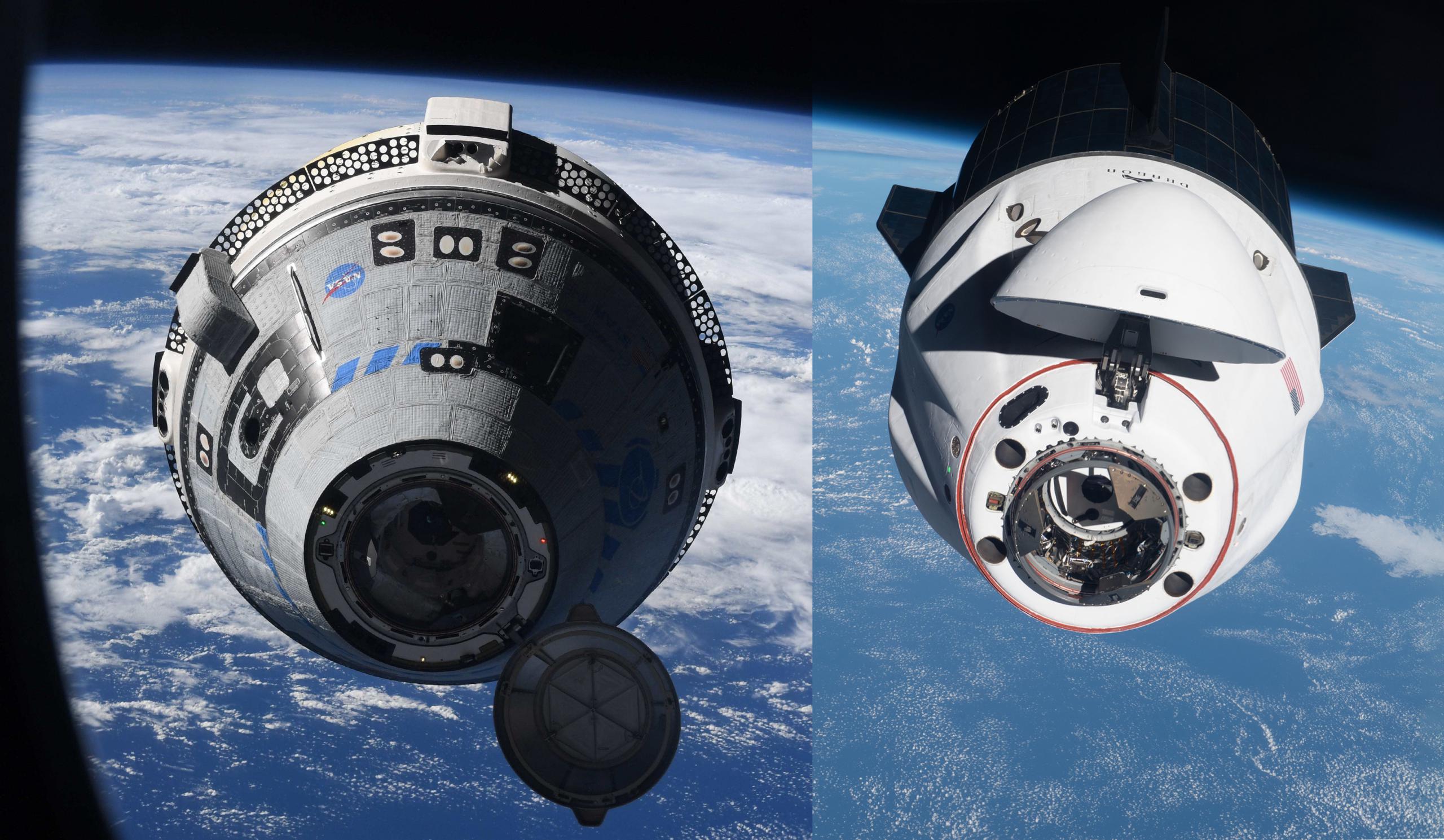
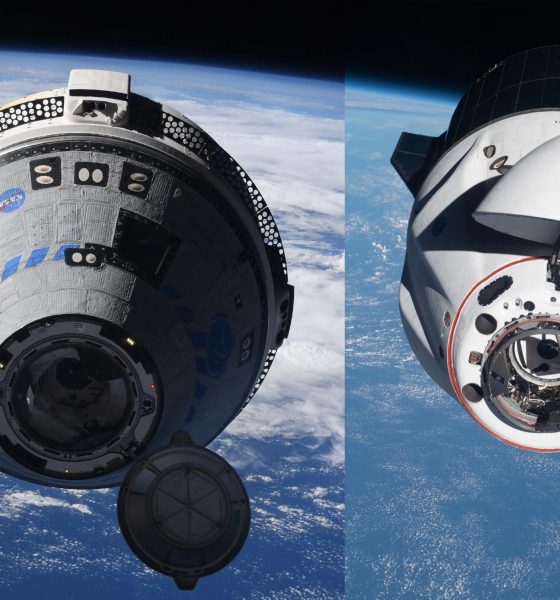
News
Boeing Starliner joins SpaceX’s Crew Dragon at the International Space Station
Boeing’s Starliner crew capsule has successfully rendezvoused, approached, and docked with the International Space Station for the first time, marking major several major milestones for NASA and its second Commercial Crew partner.
Starliner’s second orbital flight test (OFT-2) began as expected with a near-flawless May 19th launch on a United Launch Alliance (ULA) Atlas V rocket. As thousands of employees and stakeholders held their collective breath, the uncrewed prototype safely detached from Atlas V’s Centaur upper stage and propelled itself the rest of the to a stable parking orbit. Two and a half years after their first attempt, Boeing and NASA were then finally able to send Starliner on its way to the International Space Station (ISS) and prepare for proximity operations.
Welcome #Starliner ! pic.twitter.com/F7KVIRO24c— Samantha Cristoforetti (@AstroSamantha) May 21, 2022
As previously discussed on Teslarati, Starliner making it through the first hour or so of flight without running into a catastrophic problem was already a huge milestone for Boeing and a massive improvement over the company’s last two orbital flight test attempts.
“The story of Starliner’s tortured orbital flight test (OFT) campaign began in earnest on December 20th, 2019, when an uncrewed prototype first attempted to launch to the International Space Station (ISS) atop a United Launch Alliance (ULA) Atlas V rocket. A major software bug that could have been easily detected with even the most basic integrated hardware-in-the-loop prelaunch testing caused Starliner to lose control the moment it separated from Atlas V. After hundreds of seconds of unplanned burns of its many attitude control thrusters, Boeing finally regained control but Starliner no longer had enough propellant to safely reach the ISS.
Boeing would later catch and correct another unrelated software bug mere hours before Starliner’s planned reentry and recovery that, if undetected, could have caused the spacecraft’s capsule and service sections to crash into each other shortly after separation.
On July 30th, 2021, shortly before a different uncrewed Starliner was scheduled to reattempt the first Orbital Flight Test, the launch was aborted. Boeing and NASA later reported that 13 of Starliner’s 24 main oxidizer valves failed to open during a prelaunch test just a few hours before liftoff. It was eventually concluded that faulty Aerojet Rocketdyne-supplied valves and poor Boeing integration enabled water intrusion and extensive corrosion. The next OFT-2 launch attempt was delayed by almost ten months, as a result.”
Teslarati.com – May 19th, 2022
Instead of calamity, Starliner’s second OFT and third OFT attempt was mainly greeted with success. After reaching orbit, the spacecraft began raising and ‘phasing’ its orbit to rendezvous with the ISS and completed all the burns and navigation required without major issues. Finally, after several intentional test maneuvers and about an hour of unplanned troubleshooting, Starliner began its final approach and successfully docked with the ISS – joining a SpaceX Crew Dragon – at 8:28 pm EDT on May 20th (00:28 UTC 21 May).
Starliner’s successful docking made it the fourth, fifth, or sixth US spacecraft to reach the ISS, joining the Space Shuttle, three main variants of SpaceX’s Dragon, and Orbital ATK’s (now Northrop Grumman) Cygnus cargo vehicle. It also marked the first time that both NASA Commercial Crew Program vehicles have been simultaneously docked at the space station – a reassuring sign of a future with redundant access after years of Boeing delays forced SpaceX to temporarily become NASA’s sole source of astronaut transportation. While odds are good that SpaceX will ultimately be required to singlehandedly maintain NASA access to the ISS for seven six-month ‘expeditions’ (>3 years), Starliner’s thus-far-successful OFT2 mission significantly improves the odds that the Boeing spacecraft will be fully ready within a year or two.
Nonetheless, Starliner must still safely depart the ISS, lower its orbit, reenter Earth’s atmosphere, and safely touch down for recovery and reuse. Starliner has already accomplished all of those tasks during OFT1, but tensions will still be high. Additionally, Starliner’s performance during OFT2 has been far from perfect. Aside from a few minor issues with coolers and radiators, Boeing and NASA revealed that four of the spacecraft’s several dozen thrusters (two larger maneuvering/control thrusters and two smaller attitude control thrusters) – had failed by the time it was docked. During OFT1, as many as 13 thrusters failed as a result of minutes of unplanned burns, but Boeing was able to recover all but one before reentry.
Technically, that means that both missions have demonstrated the solid redundancy of Starliner’s propulsion systems, but NASA will undoubtedly demand that Boeing determine probable root causes and qualify fixes before greenlighting Starliner’s first Crewed Flight Test (CFT). For SpaceX, it took 14 months after Crew Dragon’s first near-flawless uncrewed debut for NASA to agree to proceed with a crewed flight test. However, during post-flight testing, the capsule that support Demo-1 catastrophically exploded, triggering a several-month investigation. The effect of a few failed thrusters is decidedly less severe, so Starliner might not have to wait as long for CFT. With any luck, that means that NASA will have two fully-redundant astronaut transport spacecraft available and operational by the end of 2023, if not earlier.

News
Tesla launches its new branded Supercharger for Business with first active station
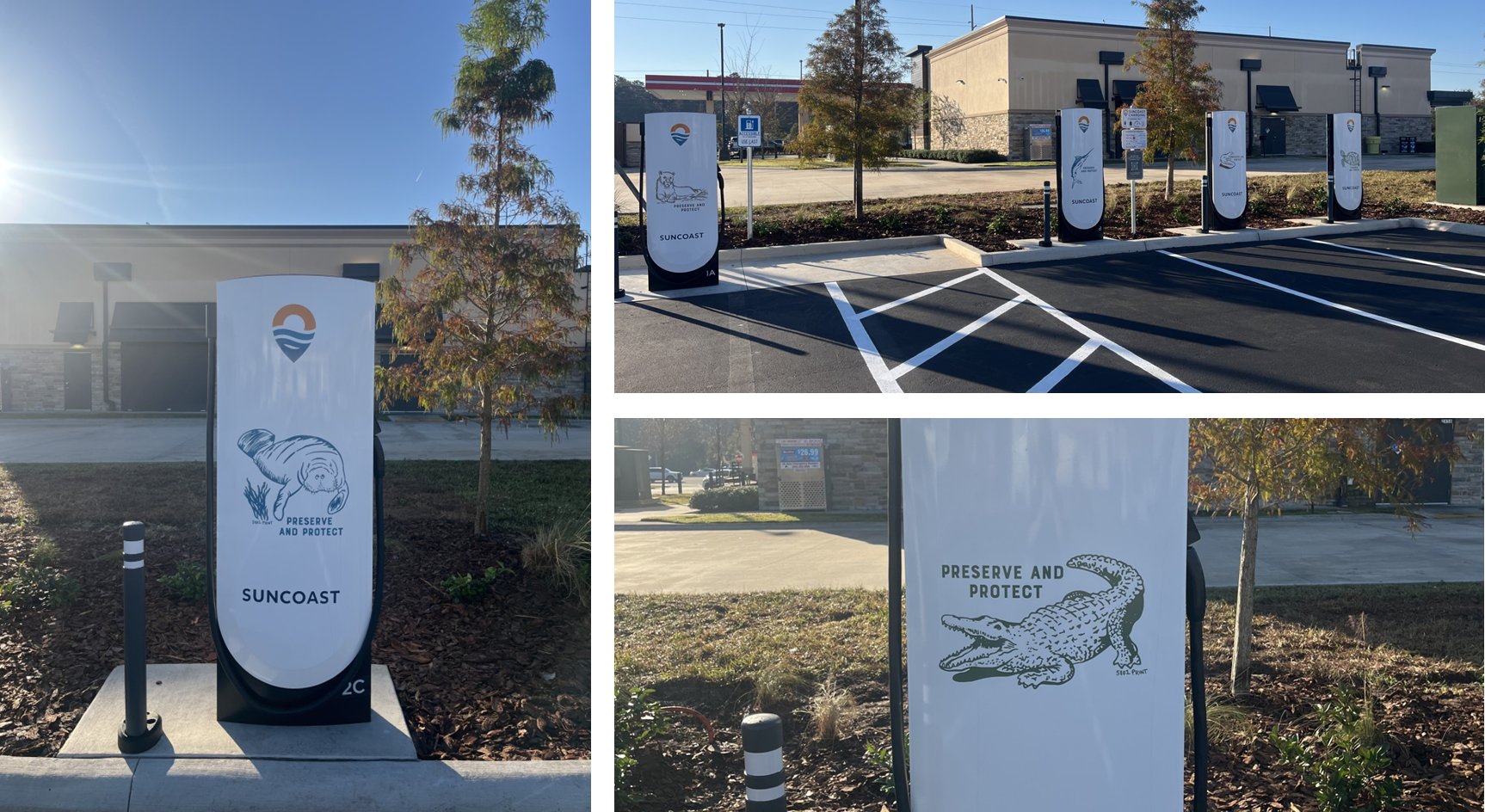
Tesla has officially launched its first branded Supercharger just months after initiating a new program that allows third-party companies to brand their own charging piles.
The site opened in Land O’ Lakes, Florida, and features eight V4 Supercharging stalls offering up to 325 kW of charging speed. It appears it was purchased by a company called Suncoast Credit Union. This particular branch is located Northeast of Tampa, which is on the Gulf of Mexico.
It features graphics of Florida animals, like alligators:
Here’s a video of the graphics being installed on the Tesla Superchargers at this site: https://t.co/oIfEPNZjAH pic.twitter.com/ENWakZ2qT9
— TESLARATI (@Teslarati) November 20, 2025
Tesla launched this program back in September, and it basically was a way to expand its Supercharger presence and also allow companies to pay for the infrastructure. Tesla maintains it. When it announced the “Supercharger for Business,” it said:
“Purchase and install Superchargers at your business. Superchargers are compatible with all electric vehicles, bringing EV drivers to your business by offering convenient, reliable charging.”
The program does a few things. Initially, it expands EV charging infrastructure and makes charging solutions more readily available for drivers. It can also attract people to those businesses specifically.
Tesla launches new Supercharger program that business owners will love
The chargers can also be branded with any logo that the business chooses, which makes them more personalized and also acts as an advertisement.
The best part is that the customers do not have to maintain anything about the Supercharger. Tesla still takes care of it and resolves any issues:
“We treat your site like we treat our sites. By providing you with a full-service package that includes network operations, preventative maintenance, and driver support, we’re able to guarantee 97% uptime–the highest in the industry.”
It appears the Superchargers will also appear within the in-car nav during routing, so they’ll be publicly available to anyone who needs to use them. They are still available to all EVs that have worked with Tesla to utilize its infrastructure, and they are not restricted to people who are only visiting the business.
Cybertruck
Tesla reveals its Cybertruck light bar installation fix
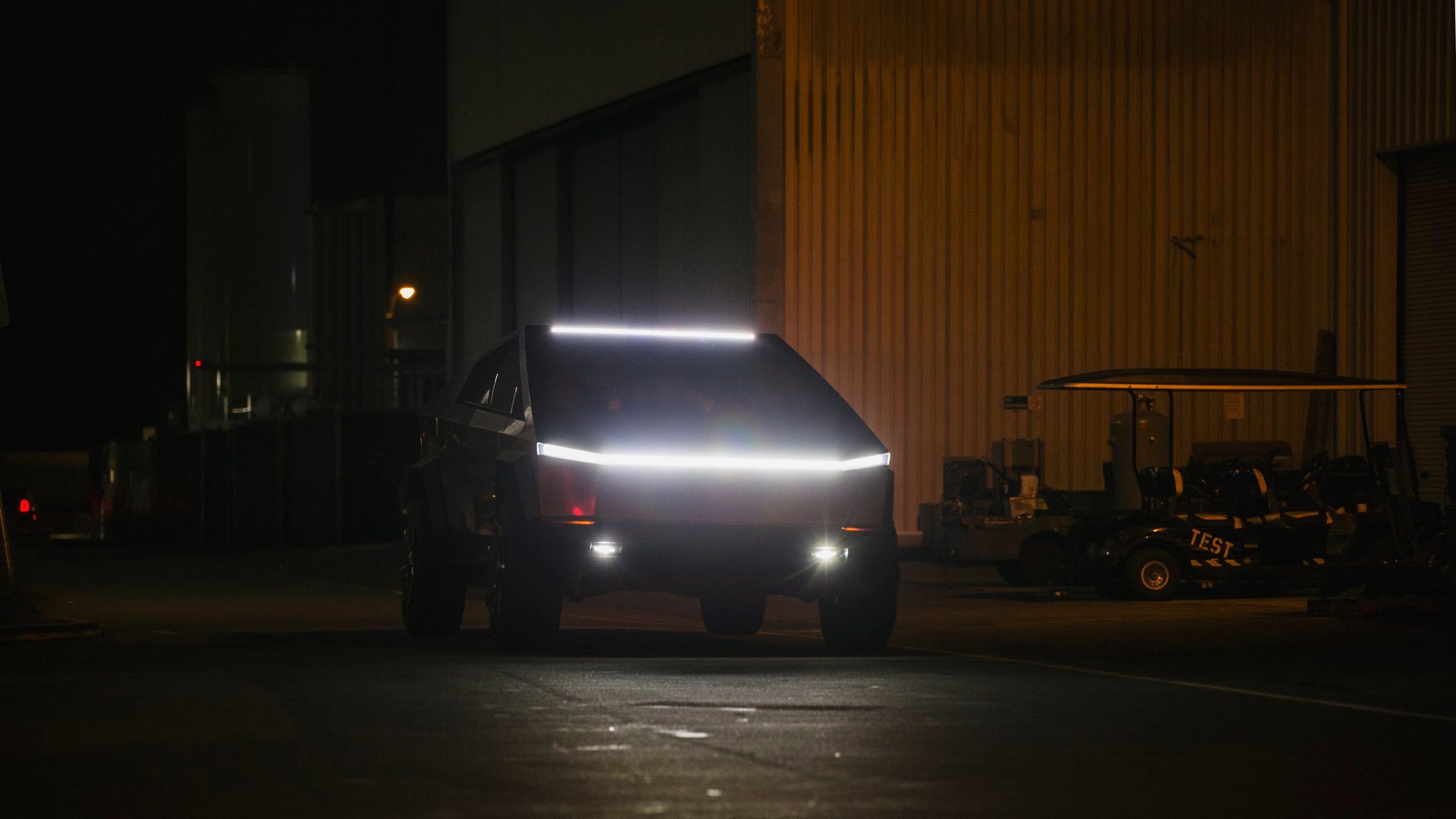
Tesla has revealed its Cybertruck light bar installation fix after a recall exposed a serious issue with the accessory.
Tesla and the National Highway Traffic Safety Administration (NHTSA) initiated a recall of 6,197 Cybertrucks back in October to resolve an issue with the Cybertruck light bar accessory. It was an issue with the adhesive that was provided by a Romanian company called Hella Romania S.R.L.
Tesla recalls 6,197 Cybertrucks for light bar adhesive issue
The issue was with the primer quality, as the recall report from the NHTSA had stated the light bar had “inadvertently attached to the windshield using the incorrect surface primer.”
Instead of trying to adhere the light bar to the Cybertruck with an adhesive, Tesla is now going to attach it with a bracketing system, which will physically mount it to the vehicle instead of relying on adhesive strips or glue.
Tesla outlines this in its new Service Bulletin, labeled SB-25-90-001, (spotted by Not a Tesla App) where it shows the light bar will be remounted more securely:
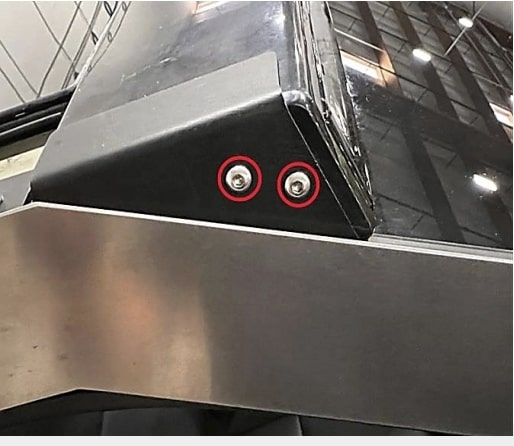
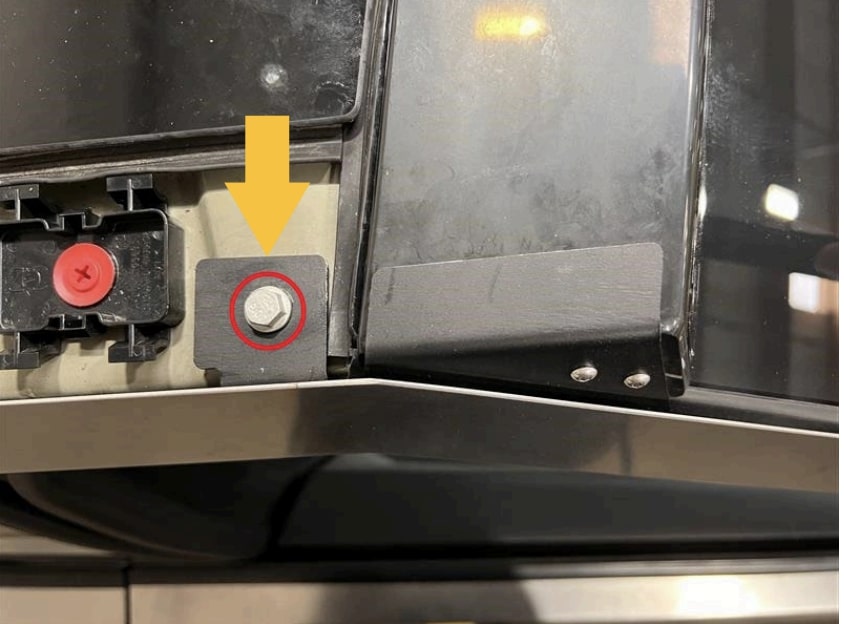
The entire process will take a few hours, but it can be completed by the Mobile Service techs, so if you have a Cybertruck that needs a light bar adjustment, it can be done without taking the vehicle to the Service Center for repair.
However, the repair will only happen if there is no delamination or damage present; then Tesla could “retrofit the service-installed optional off-road light bar accessory with a positive mechanical attachment.”
The company said it would repair the light bar at no charge to customers. The light bar issue was one that did not result in any accidents or injuries, according to the NHTSA’s report.
This was the third recall on Cybertruck this year, as one was highlighted in March for exterior trim panels detaching during operation. Another had to do with front parking lights being too bright, which was fixed with an Over-the-Air update last month.
News
Tesla is already expanding its Rental program aggressively
The program has already launched in a handful of locations, specifically, it has been confined to California for now. However, it does not seem like Tesla has any interest in keeping it restricted to the Golden State.
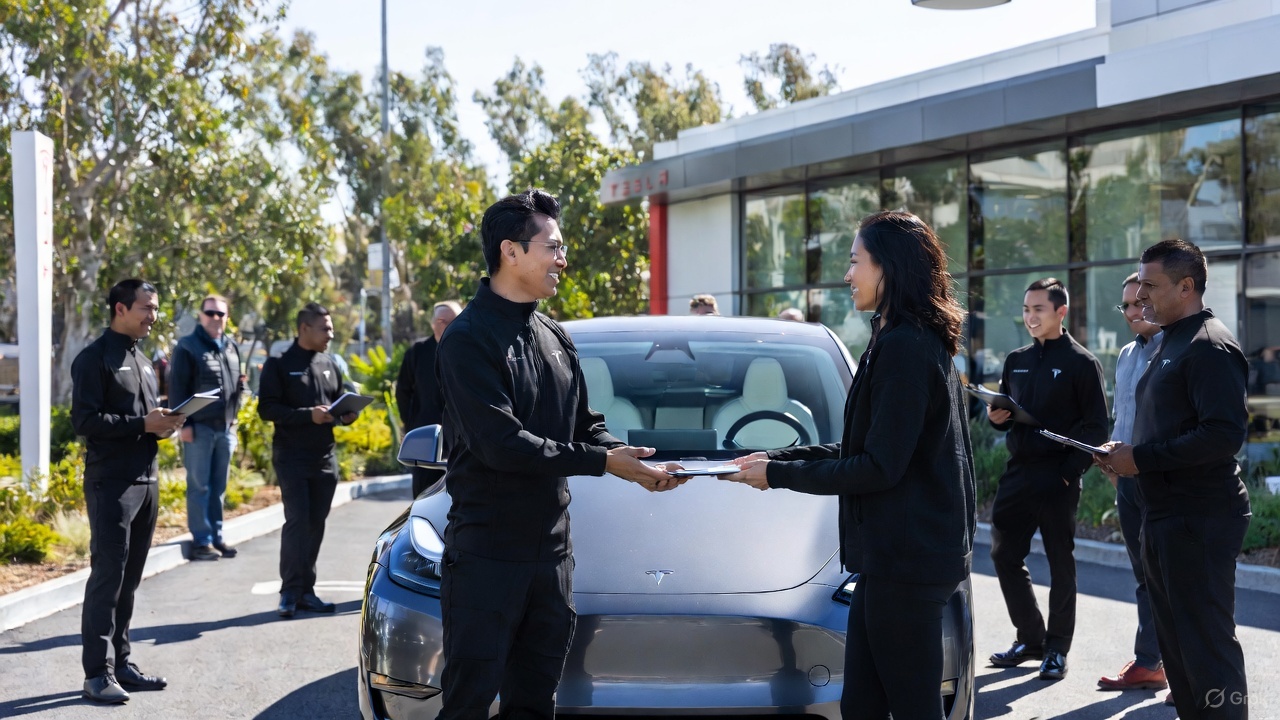
Tesla is looking to expand its Rental Program aggressively, just weeks after the program was first spotted on its Careers website.
Earlier this month, we reported on Tesla’s intention to launch a crazy new Rental program with cheap daily rates, which would give people in various locations the opportunity to borrow a vehicle in the company’s lineup with some outrageous perks.
Along with the cheap rates that start at about $60 per day, Tesla also provides free Full Self-Driving operation and free Supercharging for the duration of the rental. There are also no limits on mileage or charging, but the terms do not allow the renter to leave the state from which they are renting.
🚨🚨 If you look up details on the Tesla Rental program on Google, you’ll see a bunch of sites saying it’s because of decreasing demand 🤣 pic.twitter.com/WlSQrDJhMg
— TESLARATI (@Teslarati) November 10, 2025
The program has already launched in a handful of locations, specifically, it has been confined to California for now. However, it does not seem like Tesla has any interest in keeping it restricted to the Golden State.
Job postings from Tesla now show it is planning to launch the Rental program in at least three new states: Texas, Tennessee, and Massachusetts.
The jobs specifically are listed as a Rental Readiness Specialist, which lists the following job description:
“The Tesla Rental Program is looking for a Rental Readiness Specialist to work on one of the most progressive vehicle brands in the world. The Rental Readiness Specialist is a key contributor to the Tesla experience by coordinating the receipt of incoming new and used vehicle inventory. This position is responsible for fleet/lot management, movement of vehicles, vehicle readiness, rental invoicing, and customer hand-off. Candidates must have a high level of accountability, and personal satisfaction in doing a great job.”
It also says that those who take the position will have to charge and clean the cars, work with clients on scheduling pickups and drop-offs, and prepare the paperwork necessary to initiate the rental.
The establishment of a Rental program is big for Tesla because it not only gives people the opportunity to experience the vehicles, but it is also a new way to rent a car.
Just as the Tesla purchasing process is more streamlined and more efficient than the traditional car-buying experience, it seems this could be less painful and a new way to borrow a car for a trip instead of using your own.








